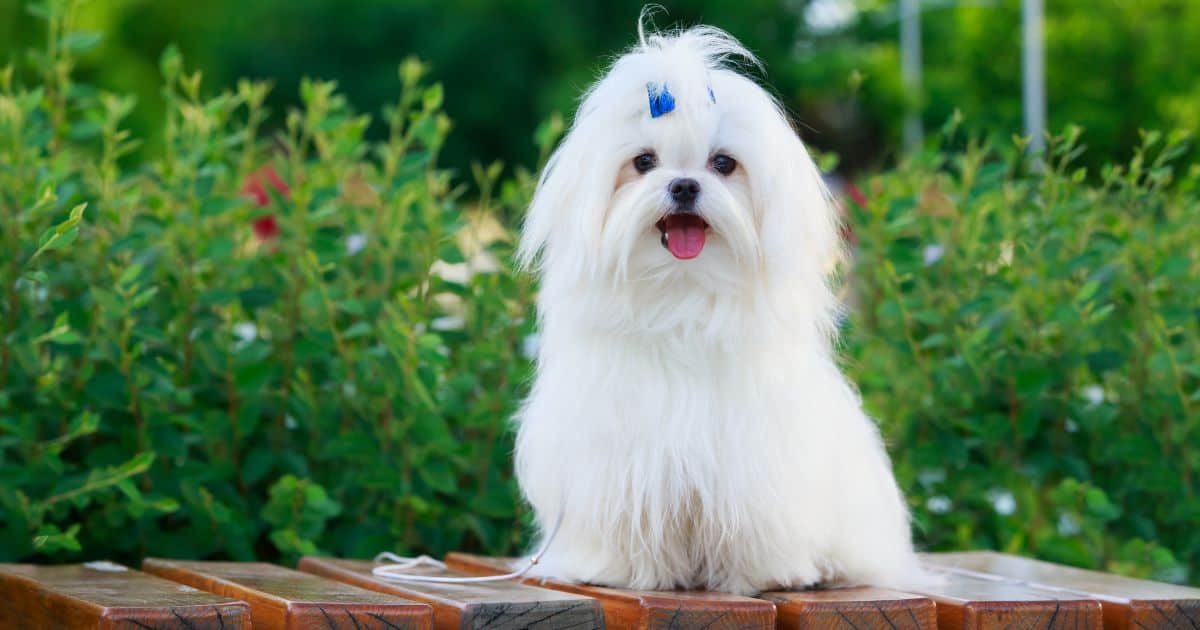Table of Contents
Many dog owners have experienced the frustration of finding their beloved plants chewed and destroyed by their furry friends. Not only is this behavior destructive, but it can also be harmful to your dog’s health, as some plants are toxic when ingested. If you’re a plant lover who also happens to be a pet owner, you may be searching for effective ways to stop your dog from eating your plants.
In this article, we’ll explore several strategies to protect your greenery while keeping your dog safe and happy.
Create A Physical Barrier
A simple yet effective solution is to create a physical barrier around your plants. Use baby gates, playpens, or fencing to prevent your dog from accessing the area where your plants are located.
You can also place plants on high shelves or hang them from the ceiling to keep them out of reach. And if your dog has already destroyed some of your plants, consider a potted flower delivery to replace them without leaving the comfort of your home
Train Your Dog
Training your dog from an early age is essential to establish good behavior and prevent destructive habits. Start by teaching them basic commands like “leave it” or “off.” This way, when you catch your dog sniffing around your plants, you can use these commands to discourage the behavior.
Consistent training and positive reinforcement can help your dog learn to avoid your plants in the long run.
Provide Alternative Chew Toys
Dogs often chew on plants out of boredom or to satisfy their natural chewing instincts. By providing a variety of chew toys, you can redirect your dog’s chewing behavior to more appropriate items.
Use Taste Deterrents
There are several dog deterrents available in the market that can help you protect your plants. These can range from natural homemade solutions, like a mixture of water and vinegar, to store-bought repellents that are designed to be unpleasant for your dog’s sense of smell or taste.
Apply these deterrents around your plants, but be cautious not to use anything that may harm your dog or your plants.
Ensure Your Dog Gets Enough Exercise
A bored or under-stimulated dog is more likely to engage in destructive behaviors, including eating plants. Ensure that your dog gets enough physical exercise and stimulation through daily walks, play sessions, and puzzle toys.
A well-exercised dog is less likely to turn to your plants for entertainment.
Keep Toxic Plants Out Of Reach
Some plants can be toxic to dogs when ingested. Make a list of toxic plants and ensure that they are either removed from your home or placed in an area where your dog cannot access them. This step will help protect your dog’s health while preventing them from chewing on harmful plants.
Monitor Your Dog
Supervise your dog when they are in the vicinity of your plants. If you notice them showing interest in a plant, redirect their attention to a toy or treat. Monitoring your dog can help prevent them from developing a habit of chewing on your plants.
Use Positive Reinforcement
Reward your dog with praise or treats when they choose not to chew on your plants. Positive reinforcement can help them associate leaving the plants alone with positive outcomes.
Create A Designated Dog-Friendly Area
Dedicate a part of your garden as a dog-friendly area where your furry friend can play, explore, and dig without the risk of harming your plants.
You can use dog-friendly landscaping materials like mulch or artificial turf to create a comfortable space for your dog. Providing them with their own space will also help prevent boredom and reduce the temptation to investigate your plants.
Use Pet-Safe Repellents
There are pet-safe repellents on the market that can be applied to your plants to discourage your dog from chewing on them. These repellents often have a smell or taste that is unpleasant to dogs, making the plants less appealing.
Redirect Your Dog’s Energy
Engage your dog in activities that redirect their energy away from your plants, such as playing fetch, going for a walk, or practicing obedience training.
Provide Mental Stimulation
In addition to physical exercise, make sure your dog receives enough mental stimulation each day. Interactive toys, puzzle feeders, and training sessions can help keep your dog’s mind occupied and reduce the likelihood of them chewing on your plants.
Address Any Underlying Medical Issues
If your dog’s plant-chewing behavior seems excessive or sudden, consult your veterinarian to rule out any underlying medical issues that may be causing the behavior. Addressing any health concerns can help resolve the problem and keep your dog and your plants safe.
Establish Boundaries
Train your dog to understand that certain areas of your home are off-limits. This can include rooms or spaces where your plants are located. Consistent training will help your dog learn to respect these boundaries.
Be Patient And Consistent
Breaking a habit like chewing on plants takes time and consistency. Be patient with your dog and maintain a consistent approach to training and redirection. Over time, your dog will learn that chewing on plants is not an acceptable behavior.
Gradual Introduction Of Plants
If you’re introducing new plants to your home, do so gradually. This will give your dog time to adjust to the presence of the plants and allow you to monitor their behavior closely. Make sure to praise and reward your dog when they show no interest in the new plants.
Use Fences Or Barriers
Installing barriers and fencing around your plants can be an effective way to keep your dog from getting to them. This can be as simple as using small fences or wire mesh around individual plants, or creating a separate fenced-in area for your plants if you have a larger garden.
Make sure the barriers are sturdy and tall enough to prevent your dog from jumping over or knocking them down.
Offer Dog-Friendly Plants
Some dogs may be attracted to plants due to their natural curiosity or desire to explore new scents and textures. Provide your dog with their own dog-friendly plants.
Some plant options include:
- Wheatgrass: Also known as “cat grass,” wheatgrass is safe for dogs to chew on and provides them with some beneficial nutrients. You can grow small pots of wheatgrass and place them strategically around your garden to attract your dog’s attention.
- Thyme: This hardy herb is non-toxic to dogs and can withstand some trampling. Planting thyme in your dog’s designated area can provide them with a pleasant-smelling and safe plant to interact with.
- Chamomile: Another dog-safe option, chamomile is a calming plant that can be used in your dog’s play area, providing a soft ground cover and a gentle scent.
Remember to research any plants you plan to introduce to your garden to ensure they are safe for your dog. By creating a garden space that caters to both you and your canine companion, you can reduce the likelihood of your dog seeking out your precious plants as a source of entertainment.
Consult A Professional Dog Trainer
If you’ve tried the above suggestions and are still struggling with your dog’s plant-chewing behavior, consider consulting a professional dog trainer for personalized guidance and support.
A dog trainer can assess your dog’s specific needs and provide tailored strategies to help you effectively manage the issue.
In Conclusion
Protecting your plants from your dog’s curious and sometimes destructive behavior can be challenging, but with patience, consistency, and the right strategies, you can create a harmonious environment for both your furry friend and your greenery. By addressing the root causes of your dog’s chewing behavior and using the tips provided above, you can minimize the risk of your plants being damaged.
And if you’re looking to replace any damaged plants or add new ones to your collection, consider using potted flower delivery services, which offer a convenient way to replenish your greenery without leaving your home.




Leave a Reply
You must be logged in to post a comment.